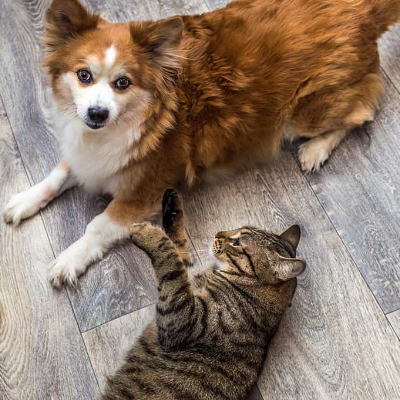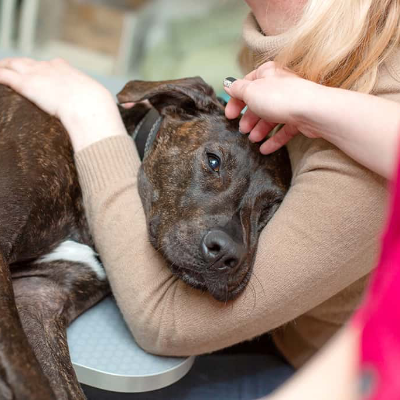Bringing Home a Rescue Dog; Tips for a Successful First Week

Bringing Home a Rescue Dog; Tips for a Successful First Week
Congratulations! You have decided to add a rescue dog to the family. It will likely be one of the most rewarding decisions you have ever made! Not only are you saving a life, but you and your family members will have a loyal, loving companion for years to come.
What you do in the first week will lay the foundation for your relationship. Here are some tips to help make your rescue dog’s transition home a smooth process.
Plan Before You Bring Your Rescue Dog Home
- Set up your house for your new dog. Decide where you will place the dog’s crate and bed. Determine where his food and water bowls will be located, and where all dog food and treats will be stored.
- Determine house rules for the dog and make sure all family members are on board. Will the dog be allowed on the furniture? Will the dog sleep in his crate, or will you let the dog sleep in a bedroom on a dog bed? Who will be responsible for walking the dog and when?
- Make sure you have all the necessary supplies. Crate, Leash, Collar, ID Tag, Gates (if needed), Bed, Food/Water Bowls, Food, Treats, Chew Toys, Grooming Supplies, Waste Bags, Pet-friendly Cleaner.
- Decide on a schedule for the dog that includes walks, playtime, training, feeding time, and potty time.
- Make sure all animals currently in your home are up-to-date on their shotsand in good health before introducing your new dog.
Dog’s Arrival Day
- Secure the dog in the car on the drive home. Have a travel crate, leash, or second person with you to ensure the dog is not loose in the car. Bring some towels in the car in case the dog gets motion sickness.
- Bring the dog straight home. Do not pick up supplies on the way home or plan to run errands while the dog is in the car.
- Let the dog sniff around the new property. Once you arrive home, walk the dog around outside on a leash. Let him sniff around. Then take him to the designated “potty” spot. Reward him with praise and a treat just for accompanying you to the spot.
- Introduce the dog to family members outside, if possible. Keep the introductions calm and low-key. Avoid introductions with friends and extended family until the dog has settled into your home and routine.
- Give the dog a tour of the house. Keep him on a leash and walk him through the house.
Allow the Dog Time to Adjust
Remember, your dog will need time to decompress and adjust to his new life.
No matter how wonderful the shelter or rescue where you got your dog, or how much love you provide, your new canine companion is going to experience stress from the change in his routine.
Not only is your new family member getting to know you and vice versa, but he is also adjusting to a new environment. If you adopted from a shelter, your dog may have lived for weeks or even months where home was considered a cement block surrounded by the sounds of other dogs barking nonstop.
Previous owners may have surrendered him, or he may have been a stray.
The best thing you can do is give your new dog some time and patience to adjust to his new home. The time it takes to decompress and return to a calm state of mind varies depending on the dog. However, you should expect it to take at least a full week or two.
Tips For Successful Decompression Phase
While your new rescue dog is decompressing, you need to be gentle and respectful of his need for space and quiet time. Although you want to show your new family member off, it’s best not to overwhelm him with introductions to new people, animals, and places during this time.
To help with the adjustment process, you should:
- Create a routine that involves exercise, such as walks and playing ball.
- Keep your new rescue dog separate from other dogs in the house until you know that he is settled and ready to be introduced to them slowly.
- If you have other dogs, have the initial introduction outside. If you have more than one dog, introduce them one at a time to the new dog. Keep the leashes loose with no tension. Make sure the dogs meet in an area where no food or toys are present.
- Keep your new dog in his crate during decompression. Putting him in the crate for a couple of hours each day will teach him that it is a safe place he can go to be alone.
- Always put him in the crate when you leave the house. Crating him is primarily for his safety, should he experience separation anxiety when you leave home. Once he is comfortable, you can decide if he can stay free in the home when you leave the house.
- Expect that your dog will have some accidents in the house even if he is housetrained. If this happens, do not punish him. This is likely a reaction to all the changes and stress in his life. Calmly take him outside and show him where he is to do “his business.”
Your To-Do List
Here are a few steps you should take to ensure your new pet thrives in the weeks to come:
- Make an appointment for your new dog with a veterinarian within a week after adoption. You want your vet to establish a relationship with your dog as soon as possible. He or she can do a thorough health check and administer any needed vaccinations.
- If your dog has not been spayed or neutered, make an appointment.
- Begin training your new dog or brushing up on basic training.
- You might consider signing your dog up for a training and socialization class.
Sources
- https://dogtime.com/advocacy/35621-tips-decompressing-new-rescue-dog
- http://www.pawrescue.org/
- https://www.arlboston.org/welcoming-your-adopted-dog-into-your-home/
- https://www.humanesociety.org/resources/bringing-your-new-dog-home
- https://www.cesarsway.com/8-essential-steps-to-bringing-a-new-dog-into-the-home/
- https://www.humanesociety.org/resources/how-housetrain-your-dog-or-puppy






